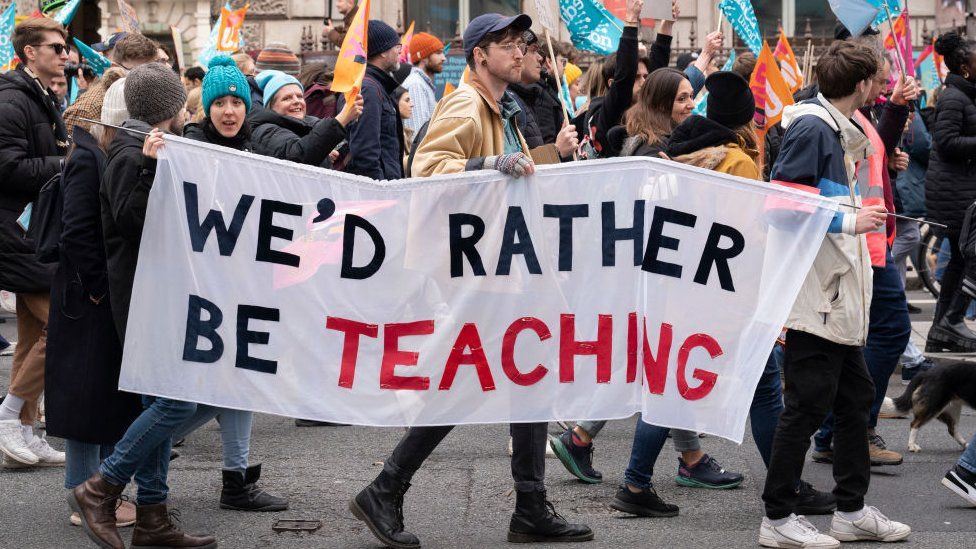Why Are Teachers Striking?
21.04.23
With the current strike action by teachers at the moment. It seems a good moment to try and unpick the question: Why are teachers striking?
Often the media paints a distorted picture of strike action. This is true of all sectors and – naturally – the focus is often on the disruption caused rather than the reasons behind the action.
It’s why you may have seen plenty of reporting about cancelled appointments and operations because of strikes in the NHS, for example. Meanwhile, in education, much of the media attention has focused on the disruption to children’s schooling – especially as the industrial action comes relatively soon after covid – and all the disruption to education caused by the pandemic.

Teacher strikes – Some context
For over a decade now government funding for education has been cut. The funding squeeze has had a detrimental effect on the quality of children’s education. Schools have been forced to cut services to the bone and are continually asked to do more with less.
On a day-to-day basis, this means less teachers and support staff which, in turn, leads to larger class sizes. Provision for students with special needs and those with mental health issues has been particularly affected.
In addition, the current climate of increased energy prices has crippled schools financially. Moreover, the government’s continued resistance to dealing with longstanding concerns about teachers’ pay and workload has exacerbated an already worrying recruitment and retention crisis within the profession.
Schools are struggling to attract new teachers. Not only that, one in three teachers leave the profession within five years of qualifying.
There are teacher shortages in many subjects, including Maths. School leaders are increasingly left with no option but to put non-specialist staff in front of classes.
Why are Teachers Striking? – It’s not just about pay
When you appreciate the context surrounding it, you can see that the current industrial action in schools is certainly not just about pay.
However, pay is an issue. The profession has faced pay freezes and minimal rises for over a decade. Pay offers have increased slightly in the last year – an average of 5.4% in September and a further offer of 4.5% for next year. However, these rises are heavily weighted for teachers at the lower end of the pay scale. It means that experienced teachers and school leaders receive the least. This does nothing to address the existing retention issues, the pay awards are still not enough to attract new recruits to the profession in the numbers that are so desperately needed.
The other thing which should not be forgotten is that any pay rise that the government has offered to date has not been fully funded. The money to pay for salary increases must come out of a school’s existing budget – essentially meaning that the greater the pay rise, the more students suffer.
Teachers’ wages have been falling behind for years now. And with the current 10%+ rate of inflation, the pay offers that the government has offered to date are in effect real terms pay cuts. Indeed – teachers have lost 23% in real terms since 2010. And for support staff, the figure is even higher at 27%
All teachers are asking for is a fully funded, above-inflation pay rise.
Teaching unions argue that any disruption to children’s education through strike action is dwarfed by the long-term damage caused by year-on-year education funding cuts, and the government’s continued inaction on teacher workload and pay.
All in all, the answer to the question ‘Why are teachers striking?‘ lies within a perfect storm of low pay, funding cuts, and excessive workload.
And, as the unions say, staff working conditions are student learning conditions.





